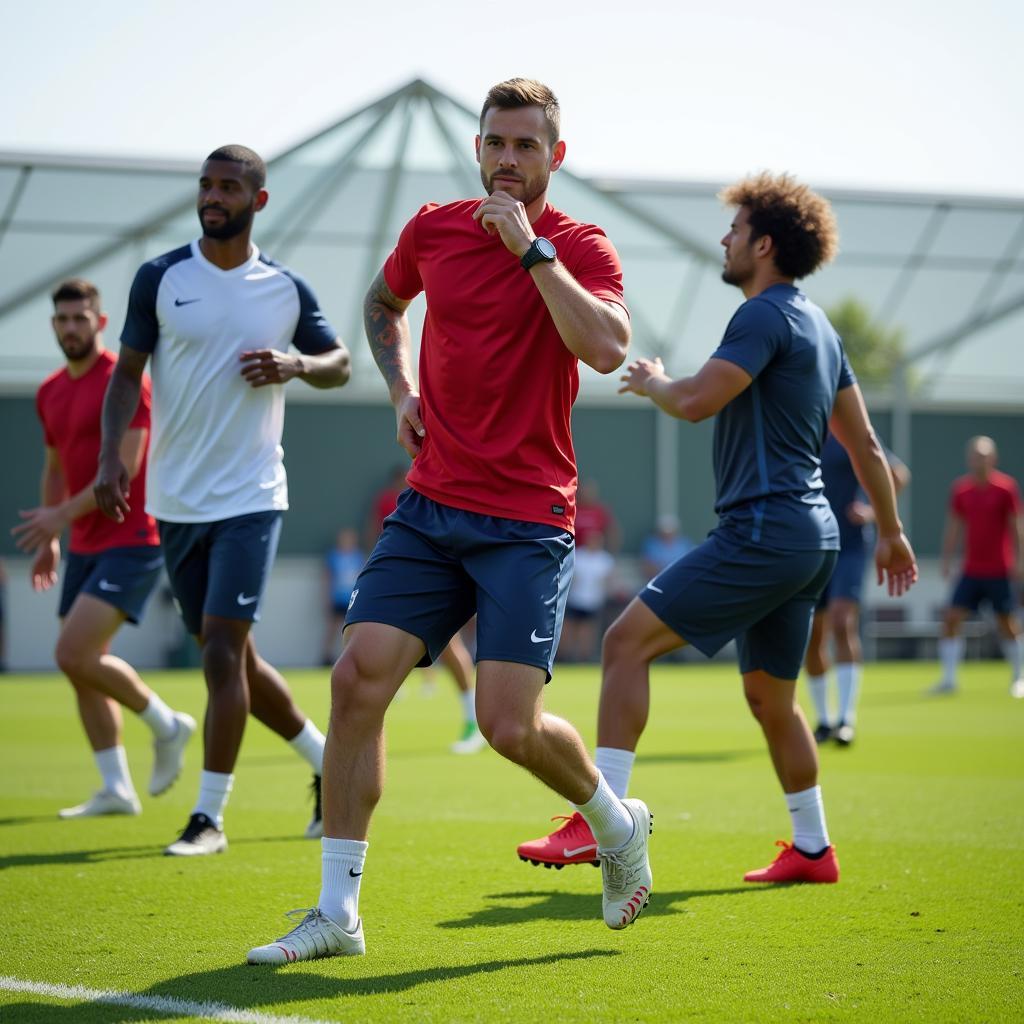How to Recover from Football Injuries Like a Pro
November 21, 2024Recovering from a football injury can be a tough challenge, but with the right approach, you can get back on the pitch stronger than ever. This article provides a comprehensive guide on how to effectively manage football injuries and expedite the recovery process.
Understanding Football Injuries and the Recovery Process
Football is a physically demanding sport, and injuries are an unfortunate reality. From hamstring strains to ankle sprains, understanding the nature of your injury is crucial for effective recovery. The recovery process typically involves rest, ice, compression, elevation (RICE), physical therapy, and gradual return to activity.
Common Football Injuries
Some of the most common football injuries include:
- Hamstring strains
- Groin pulls
- Ankle sprains
- ACL tears
- Meniscus tears
The Importance of Early Intervention
Early intervention is key to minimizing the severity of the injury and promoting faster healing. Seeking medical attention as soon as possible is vital. A proper diagnosis from a qualified medical professional will guide your recovery plan.
Effective Strategies for Injury Recovery
Recovery requires patience, discipline, and a commitment to a structured plan. Here’s a step-by-step guide:
- Rest: Allow your body adequate time to heal. Avoid putting weight on the injured area and follow your doctor’s instructions regarding rest.
- Ice: Apply ice packs to the injured area for 15-20 minutes at a time, several times a day, to reduce swelling and pain.
- Compression: Use compression bandages to support the injured area and minimize swelling.
- Elevation: Keep the injured area elevated above your heart to reduce swelling.
- Physical Therapy: Work with a qualified physical therapist to regain strength, flexibility, and range of motion.
- Gradual Return to Activity: Don’t rush back onto the field. Gradually increase your activity level as advised by your medical team.
Nutrition and Recovery
Proper nutrition plays a crucial role in the healing process. A balanced diet rich in protein, vitamins, and minerals is essential for tissue repair and overall recovery.
Key Nutrients for Recovery
- Protein: For muscle repair and growth.
- Vitamin C: For collagen production and wound healing.
- Vitamin D: For bone health.
- Calcium: For bone strength.
“Nutrition is just as important as the physical therapy itself,” says Dr. Emily Carter, a leading sports physician specializing in football injuries. “A balanced diet fuels the body’s natural healing process and optimizes recovery time.”
Preventing Future Injuries
While injuries are sometimes unavoidable, proactive measures can significantly reduce your risk.
Key Prevention Strategies
- Warm-up properly before each training session and match.
- Cool down after each session.
- Maintain good strength and flexibility.
- Wear appropriate footwear.
- Listen to your body and rest when needed.
“Preventing injuries is always the best strategy,” says renowned fitness coach, John Miller. “Proper warm-up, consistent strength training, and paying attention to your body’s signals are all crucial for long-term health and performance.”
 Football Injury Prevention Exercises
Football Injury Prevention Exercises
Conclusion
Recovering from a football injury requires a comprehensive and patient approach. By following these guidelines and working closely with your medical team, you can effectively manage your injury and return to the game you love. Remember, prioritizing your health and well-being is paramount for long-term success on the field.
FAQ
- How long does it take to recover from a hamstring strain? Recovery time varies depending on the severity of the strain but typically takes several weeks.
- When can I start running again after an ankle sprain? Consult your doctor or physical therapist for guidance on when to resume running.
- What are the best exercises for preventing groin pulls? Strengthening and stretching exercises targeting the adductor muscles can help prevent groin pulls.
- How can I manage pain during recovery? Ice, compression, elevation, and over-the-counter pain relievers can help manage pain.
- What should I eat to promote faster healing? A diet rich in protein, vitamins, and minerals supports tissue repair and overall recovery.
- Is it necessary to see a doctor for a minor injury? It’s always best to consult a doctor, even for minor injuries, to ensure proper diagnosis and treatment.
- How can I prevent re-injury? Follow a structured rehabilitation program, gradually increase activity, and address any underlying biomechanical issues.
Need more support? Contact us at Phone Number: 0396443476, Email: [email protected] Or visit us at: 23 Tháng 3, Đắk Nia, Gia Nghĩa, Đắk Nông, Việt Nam. We have a 24/7 customer support team. Check out our other articles on injury prevention and recovery on our website.